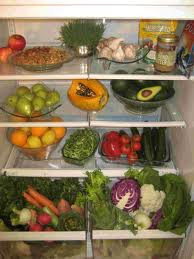“Don’t eat anything your great-grandmother wouldn’t recognize as food.” ~ Michael Pollan
 On December 1st, I had the opportunity to attend the Greater Boston Sjogren’s Syndrome Support Group. I have been on several different occasions and typically there is a different topic covered at each meeting and features a guest speaker. They have also had groups where there is an informal round table which provides an opportunity for the attendees and their support person to circulate amongst different break out sessions to discuss a variety of topics related to living with Sjogren’s syndrome.
On December 1st, I had the opportunity to attend the Greater Boston Sjogren’s Syndrome Support Group. I have been on several different occasions and typically there is a different topic covered at each meeting and features a guest speaker. They have also had groups where there is an informal round table which provides an opportunity for the attendees and their support person to circulate amongst different break out sessions to discuss a variety of topics related to living with Sjogren’s syndrome.
Yesterday’s topic was regarding nutrition and Sjogren’s syndrome. It is something I was interested in learning more about because I have done some work in this area myself. I strongly feel that it is an untapped area when it comes to the treatment of this illness. I have never had nutrition or diet discussed with me by any of my doctors in regards to Sjogren’s or any other health issue for that matter, Anything I have learned I have learned on my own. I was not sure how much new information I would learn yesterday but I figured that any tips I could get would be helpful and I was not disappointed. I am going to share some of the information provided during the lecture that I either found helpful or that I think you may find helpful.
The speaker was Tara Mardigan, MS, MPH, RD. She is a nutritionist at Lown Cardiovascular Center in Brookline, MA, Team Nutritionist for the Boston Red Sox, and most importantly, she serves on the Medical and Scientific Board of the Sjogren’s Syndrome Foundation.
Sjogren’s Nutrition
Pain: Avoid spicy, salty, acidic foods and extreme hot or cold foods. Limit carbonated beverages. Avoid crunchy, dry, chewy, and crisp foods.
GERD: Avoid large, fatty meals, and alcohol. Sit upright after meals. Eat mindfully.
Low body weight: Supplement with high protein shakes or soft bars to add calories. Plan ahead if traveling.
Constipation: Fluids, warm water, prune juice, or warm prunes, gradual introduction of fiber-rich foods, probiotic supplements, cacao nibs, psyllium husk powder, Benefiber, Smooth Move tea, bowel regimen per MD, restorative yoga poses, stretches, small walks, stress management.
Fatigue: Adjust typical meal pattern, choose nutrient-dense foods, limit refined carbohydrates, address sleep issues, add manageable exercise.
Dryness: Keep foods moist with sauces, gravies, prune puree, applesauce, honey, agave nectar, dressings, oils, or yogurt. use a food processor to help chop or liquefy foods. Try tender, slow cooked meats (crockpot). Thin foods with broth, water, or non-acidic juices. Try mini meals with frequent liquids to aid swallowing.
Gluten: Gluten is a protein found in certain grains and can damage the villi lining the small intestine which prevents the body from absorbing nutrients. People with autoimmune diseases such as Sjogren’s have a higher incidence of celiac disease and even just a sensitivity to gluten. It may be worthwhile to try eliminating gluten from the diet to see if it alleviates some of the Sjogren’s symptoms.
Eating right: A typical meal plate should be divided so that it contains fifty percent fruits/vegetables, twenty-five percent carbohydrates, and twenty-five percent lean proteins. Fish, poultry, nuts and beans are the best choice for protein. Choose healthy fats. Limit saturated fats and avoid trans fats. Choose a fiber filled diet. Choose water as your drink of choice and avoid sugary drinks. Increase calcium intake. Milk isn’t the only, or even the best source. Calcium can also be found in non-dairy sources such as almond and soy sources, beans, and greens. Decrease sodium intake. Eat less processed foods.
Omega 3: Sources include fatty fish, flaxseed, hemp, algae, and supplements and may play an important role in the inflammatory response. Discuss specific dose with MD or RD but aim for 1000-3000 mg of EPA/DHA per day. Look for at least 500 mg combined of EPA/DHA per pill or spoonful. Always take fish oil with a meal and keep in the refrigerator to minimize side effects. Caution and check with MD before taking Omega 3 supplements when taking blood thinner such as Coumadin/warfarin.
Vitamin D: Sources include sun, diet, and supplements. Ask MD to check your 25-hydroxyvitamin D, also known as 25(OH)D to determine your vitamin D status. 30ng per milliliter or greater indicates a sufficient level and anything below this indicates a deficiency. 2000IU/day of Vitamin D is the daily dose goal. Deficiency may be linked to neuropathy and lymphoma.
I think this information was the highlight of what was presented yesterday. There was quite a few things I found helpful. For example, I am a strong believer in the benefits of Omega 3’s and have been long before I was ever diagnosed with Sjogren’s. There has been research done showing the positive effects of larger doses of Omega 3’s for depression and with so many of us dealing with Sjogren’s related mood issues, whether it is situation or medication related, Omega 3’s can be a viable option to traditional prescription medication for depression. Omega 3’s are also obviously known for their anti-inflammatory properties and the dosing guidelines that Ms. Mardigan provided are a good tool.
I have also been very recently diagnosed with an esophageal motility disorder related to Sjogren’s and am having difficulty with at least half of the foods that I used to eat. One of my biggest concerns is regarding the nutritional supplement I was given during my hospitalization which was Ensure. I bought some when I came home and also purchased another one called Boost as I had lost a significant amount of weight in a short amount of time. However when I read the bottles, I was shocked to see how much sugar was in these “nutritional” supplements. Sugar is known to contribute to inflammation and there is also dairy in these products and I follow a dairy-free diet. I have spent a lot of time and energy cutting back refined sugars in my diet so I am not eager to get it all back in my nutritional supplement!
I spoke to Ms. Mardigan about this and she told me about a gluten, dairy, and soy-free nutritional supplement product called
Vega, available at Whole Foods and online, that I can use instead that does not have the sugar and will provide me with just as much nutritional support, without all the junk. I am hoping to pick some up tomorrow and try it so I will get back to you all on that.
Yesterday’s nutrition lecture did not focus on or even discuss any one particular “diet’ for Sjogren’s, but rather discussed different nutritional strategies one can utilize in an attempt to help manage the symptoms related to this very complicated illness. I would be interested in knowing what nutritional strategies (especially any of you who have been following a Paleo lifestyle as I may be heading in that direction) you have found helpful in managing Sjogren’s syndrome.
Photo Courtesy of Google Images
 On December 1st, I had the opportunity to attend the Greater Boston Sjogren’s Syndrome Support Group. I have been on several different occasions and typically there is a different topic covered at each meeting and features a guest speaker. They have also had groups where there is an informal round table which provides an opportunity for the attendees and their support person to circulate amongst different break out sessions to discuss a variety of topics related to living with Sjogren’s syndrome.
On December 1st, I had the opportunity to attend the Greater Boston Sjogren’s Syndrome Support Group. I have been on several different occasions and typically there is a different topic covered at each meeting and features a guest speaker. They have also had groups where there is an informal round table which provides an opportunity for the attendees and their support person to circulate amongst different break out sessions to discuss a variety of topics related to living with Sjogren’s syndrome.






